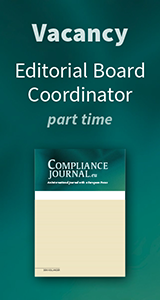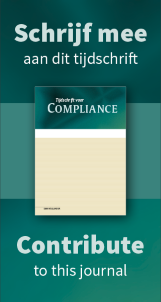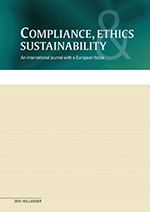The role of the second line of defense in post-event transaction monitoring
drs. R.W.A. Bakkers
The society as a whole and regulators in specific are paying more and more attention to the negative influence of financial economic crime on the real economy. Examples of financial economic crime are money laundering, tax evasion, fraud and terrorist financing. Global money laundering transactions alone are estimated at 2 to 5% of global GDP, or roughly U.S. $1-2 trillion annually. Financial institutions, such as banks, are exploited by criminal(s) (organizations) to proceed their illicit earnings
Artikel kopen € 79,00 excl. BTW
In plaats van abonneren kunt u dit artikel ook afzonderlijk kopen.
from financial economic crime. To combat this, financial institutions are, besides other controls such as customer due diligence at onboarding, expected to dedicate an increasing amount of resources on detecting suspicious behavior1 by their clients and to report such behavior to the government2 without delay. Financial institutions commonly apply 'post-event transaction monitoring' to meet this obligation to detect suspicious client behavior. A financial institution’s management board is ultimately accountable for the design and operating effectiveness of post-event transaction monitoring. However, adhering the three lines of defense model3, there are several other organizational units that play an essential role in the post-event transaction monitoring process. Examples (per line of defense) are: • First line of defense: front-office, operations, IT, legal4; • Second line of defense: compliance, risk management; • Third line of defense: internal audit. In this article we reflect on the role of the second line of defense, and specifically on the role of the compliance function, in post-event transaction monitoring. First, we elaborate on post-event transaction monitoring from a process perspective, followed by an overview of the relevant regulatory requirements5 and a deep-dive on the specific roles of the compliance function in post-event transaction monitoring. We finalize this article by reflecting on the impact of (new) technologies on post-event transaction monitoring and on the role of compliance and some concluding remarks.
U heeft op dit moment geen toegang tot de volledige inhoud van dit product. U kunt alleen de inleiding en hoofdstukindeling lezen.
Wanneer u volledige toegang wenst tot alle informatie kunt u zich abonneren of inloggen als abonnee.




